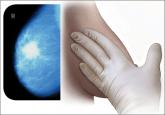Clinical Review

Does screening mammography save lives?
A Canadian study has left some clinicians uncertain about when to recommend mammography—and to whom. Here, four experts in breast cancer screening...
EXPERT COMMENTARY
Mark D. Pearlman, MD
Vice Chair and Service Chief, Division of Obstetrics and Gynecology; Professor of Surgery; and Director of the Breast Fellowship in Obstetrics and Gynecology; University of Michigan Health System, Ann Arbor, Michigan.
The author reports no financial relationships relevant to this article.

The benefit is small and the cost is high, according to this comparative modeling study. Supplemental ultrasonography after a negative mammogram in women aged 50 to 74 with dense breasts prevented 0.36 breast cancer deaths (range across three simulation models, 0.14–0.75) and gained 1.75 quality-adjusted life years (QALYs) (range, 0.9–4.7) for every 1,000 women, compared with screening mammography alone. Supplemental ultrasonography also prompted 354 biopsy recommendations after a false-positive ultrasonography report (range, 345 to 421) per 1,000 women, compared with screening mammography alone.
The cost-effectiveness ratio for supplemental ultrasonography was $325,000 per QALY gained (range, $112,000–$766,000). When women with extremely dense breasts were analyzed separately, the cost per QALY gained was $246,000 (range, $74,000–$535,000).
Sprague BL, Stout NK, Schechter C, et al. Benefits, harms, and cost-effectiveness of supplemental ultrasonography screening for women with dense breasts. Ann Intern Med. 2015;162(3):157–166.
Screening mammography in women with dense breasts (ie, containing more than 50% fibroglandular tissue) is challenging for two reasons:
Because nearly half of women in the United States undergoing screening mammography have dense breasts, it is vital that we provide them with accurate and useful counseling.
The challenge of managing women with dense breasts has become complicated by the fact that 21 states have passed laws requiring that women with dense breasts be informed through scripted messages of the decreased sensitivity of screening and increased risk of cancer and advised to
discuss with their provider whether additional testing (eg, with supplemental ultrasound) should be ordered. These laws may be well-intentioned, but they are problematic.
Although there are data documenting increased cancer detection with screening ultrasonography, there are no data currently available demonstrating that this increased detection adds value by improving important outcomes like disease-specific mortality. Further, the value proposition (improved outcomes/cost) of screening ultrasonography is unknown.
In this article, Sprague and colleagues attempt to fill this void by assessing the potential benefits, harms, and cost-effectivenessof supplemental ultrasonography following a negative screening mammogram for women with dense breasts.
Through the use of validated micro-simulation modeling, they calculate that the routine use of supplemental ultrasonography in women with dense breasts might result in 0.36 fewer deaths per 1,000 women screened. Compare this to 6 fewer deaths per 1,000 women undergoing screening mammography.
Moreover, the specificity of supplemental ultrasonography in this setting is poor, with 94% of recommended biopsies yielding benign findings (ie, positive predictive value of 6%).2
What this evidence means for practice
At present, there is little evidence that routine supplemental ultrasonography improves important outcomes such as disease-specific mortality at a rational cost. However, there may be hope on the horizon: Emerging data suggest that digital tomosynthesis as a primary screening modality may improve both specificity and sensitivity, compared with mammography, in women with dense breasts.
Initial experience with tomosynthesis demonstrates both fewer callbacks and improved cancer detection in women, compared with screening mammography.3,4 However, the value proposition of this new technology will ultimately depend on a careful analysis of its effect on mortality and cost.
–Mark D. Pearlman, MD
Share your thoughts on this article! Send your Letter to the Editor to rbarbieri@frontlinemedcom.com. Please include your name and the city and state in which you practice.

A Canadian study has left some clinicians uncertain about when to recommend mammography—and to whom. Here, four experts in breast cancer screening...
I support individual preferences regarding screening for average-risk women in their 40s
Most deaths from breast cancer occur in women who are unscreened, according to this review of medical records and death data from two large...
How do you now manage her menopausal symptoms, including bothersome hot flashes?
Yes. According to this systematic review and two meta-analyses of observational studies, cosmetic breast augmentation adversely affects survival...
